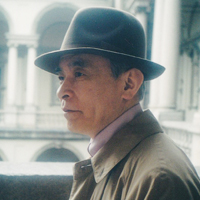Title of Presentation
“Dissolution of Autonomous Artwork in Contemporary Music, or Externalization of Musical Language”
“[W]hile for Aristotle the chief meaning of techne was the ability of the producer, the main reference of the mediaeval ars was his knowledge, and that of modern ‘art’ his product” (W. Tatarkiewicz, History of Aesthetics). As expressed concisely by these words, the focal point of the art concept in modern age has been placed on the ‘product’, that is the ‘work’ itself. This modern conception of art is supported by the concept of autonomous artwork—in other words, a work of art as a construction based on autonomous structural principles within it. Since the start of the 20th century, under the avant-garde inclination for novelty as an essential value, so-called ‘contemporary music’ also radically pursued compositions based on autonomous logical structures. However, resulting from the pursuit of such compositional methodology and because of the extreme complexity involved, this highly autonomous musical structure is perceived by the listener as an absence of structural articulation. From the epistemological viewpoint, autonomous structuring in such music lost its structural function. Then, today’s music—with its internal structuring rendered ineffective perceptually—is no more constructed, but rather it is shaped relying on external elements (context), which maintain the contours of a ‘work’ . In this kind of contemporary artwork, lacking any support of autonomous internal structural principle, its ontological autonomy becomes unsecure. The focal point of art is once again changing and moving away from the ‘product’. What direction will it go toward?
In my presentation, I will discuss in detail the historical process of deconstruction of autonomous artwork, and based on it, I will propose from my standpoint as a contemporary composer, that the focal point of art concept should shift from the ‘product’ or ‘work’ to ‘perception’.
Profile
- Web Site URL
- http://www.uymp.co.uk/composers/jo-kondo
- A brief Biography
-
Jo Kondo, composer, born in 1947. Graduated from Music Department (Composition) of Tokyo University of the Arts. Kondo resided in New York and London at the invitation of John D. Rockefeller III Fund and the British Council. He has been featured as the theme composer in many international music festivals held in Japan and abroad, and received commissions from various major organizations and performance groups in Europe and North America. Kondo has composed more than 145 works, spanning a wide range of genres, from opera, orchestral, chamber and instrumental music to vocal works, as well as electronic music. Many of them have been frequently performed in Japan and abroad, and also recorded on CDs. Almost all of his works are published by the University of York Music Press (UYMP), U.K., and some by C.F. Peters Corporation, New York. Kondo is also a prolific writer, and published six books. He taught many years at Ochanomizu University and Tokyo University of the Arts, and gave many lectures at universities and research institutes around the world.
Kondo is professor emeritus at Ochanomizu University, and Foreign Honorary Member of the American Academy of Arts and Letters.
- Details of selected Awards and Honors
-
2012 Elected to Foreign Honorary Member of the American Academy of Arts and Letters 2005 Kenzo Nakajima Music Award 1991 Otaka Prize - A list of selected Publications
-
List of Main Academic Papers
Main works of music:
Hagoromo, Opera (1994)
Mulberry, for orchestra (1998)
In Summer, for orchestra (2004)
Pillars of Time, for chamber orchestra (1999)
Three songs Tennyson sung, for soprano and chamber ensemble (2011)
Under the Umbrella, for percussion ensemble (1976)
Standing, for three instruments of different families (1973), and many othersMain books:
Sen no Ongaku (Linear Music) (Asahi Publications; 1979 and Artes Publishing; reissued in 2014)
Homo Audiens (Artes Publishing; 2013)
Oto wo nageru (Throwing Sound ) (Shunjusha; 2006)
Ongaku toiu nazo (Music, an Enigma) (Shujunsha; 2004)
Mimi no shiko (Thinking Ears) (Seidosha; 1985), and othersMain academic papers:
“The Art of Being Ambiguous — From Listening to Composing” in Contemporary Music Review, Vol. 2, Part 2 (London: Harwood Academic Publishers, 1988 )






